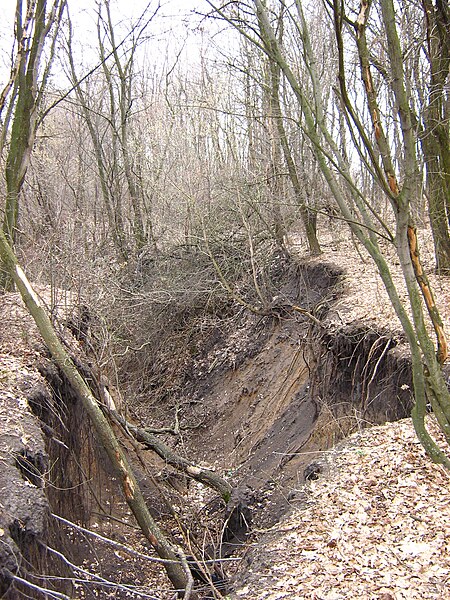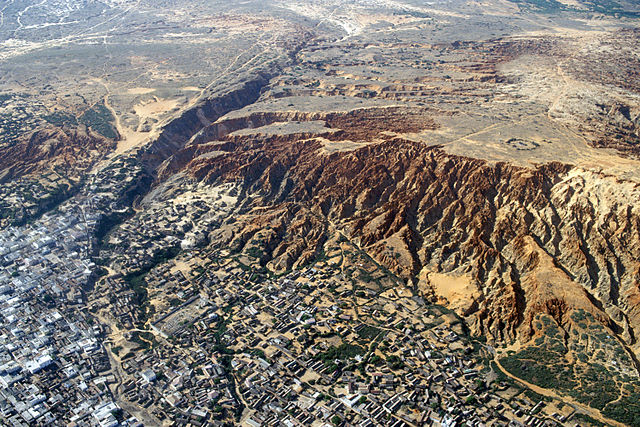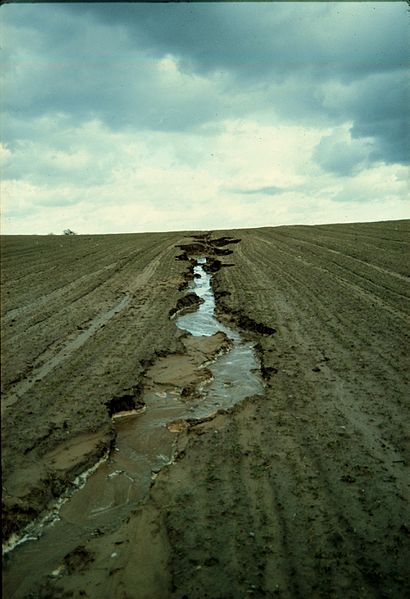A gully is a landform created by running water, mass movement, or commonly a combination of both eroding sharply into soil or other relatively erodible material, typically on a hillside or in river floodplains or terraces. Gullies resemble large ditches or small valleys, but are metres to tens of metres in depth and width, are characterized by a distinct 'headscarp' or 'headwall' and progress by headward erosion. Gullies are commonly related to intermittent or ephemeral water flow, usually associated with localised intense or protracted rainfall events or snowmelt. Gullies can be formed and accelerated by cultivation practices on hillslopes in farmland, and they can develop rapidly in rangelands from existing natural erosion forms subject to vegetative cover removal and livestock activity.
A gully in Kharkiv oblast, Ukraine.
Gullied landscape in Somalia.
A gully in Saratov Oblast, Russia.
Inside the gully (to the left) in Saratov Oblast, Russia.
Erosion is the action of surface processes that removes soil, rock, or dissolved material from one location on the Earth's crust and then transports it to another location where it is deposited. Erosion is distinct from weathering which involves no movement. Removal of rock or soil as clastic sediment is referred to as physical or mechanical erosion; this contrasts with chemical erosion, where soil or rock material is removed from an area by dissolution. Eroded sediment or solutes may be transported just a few millimetres, or for thousands of kilometres.
An actively eroding rill on an intensively-farmed field in eastern Germany
A natural arch produced by the wind erosion of differentially weathered rock in Jebel Kharaz, Jordan
A wave-like sea cliff produced by coastal erosion, in Jinshitan Coastal National Geopark, Dalian, Liaoning Province, China
Soil and water being splashed by the impact of a single raindrop








